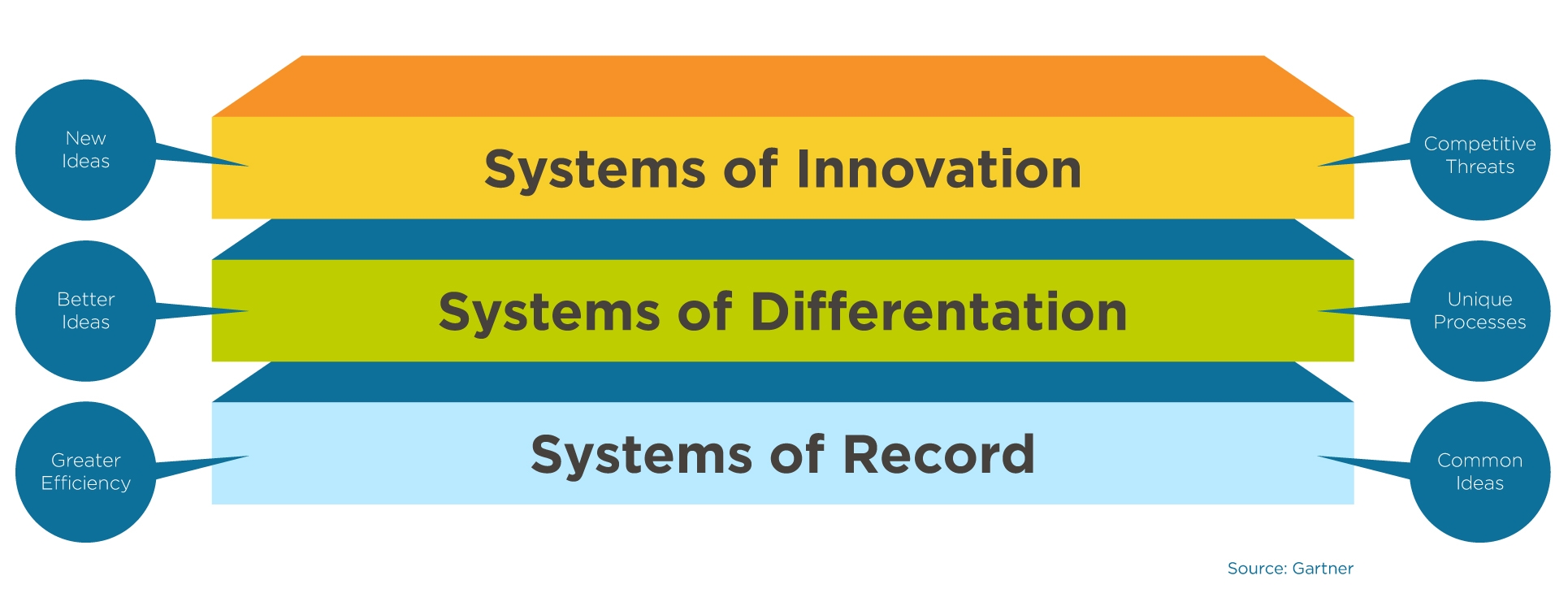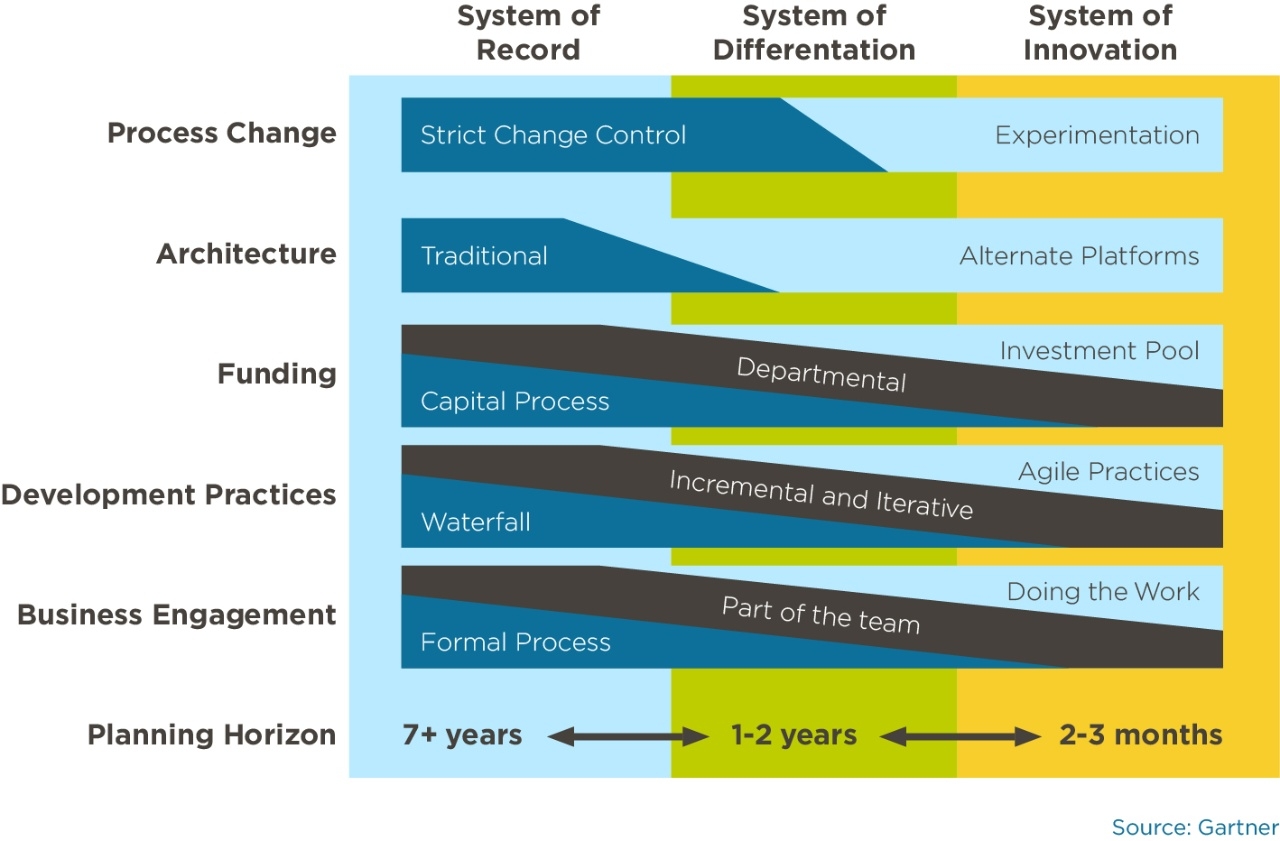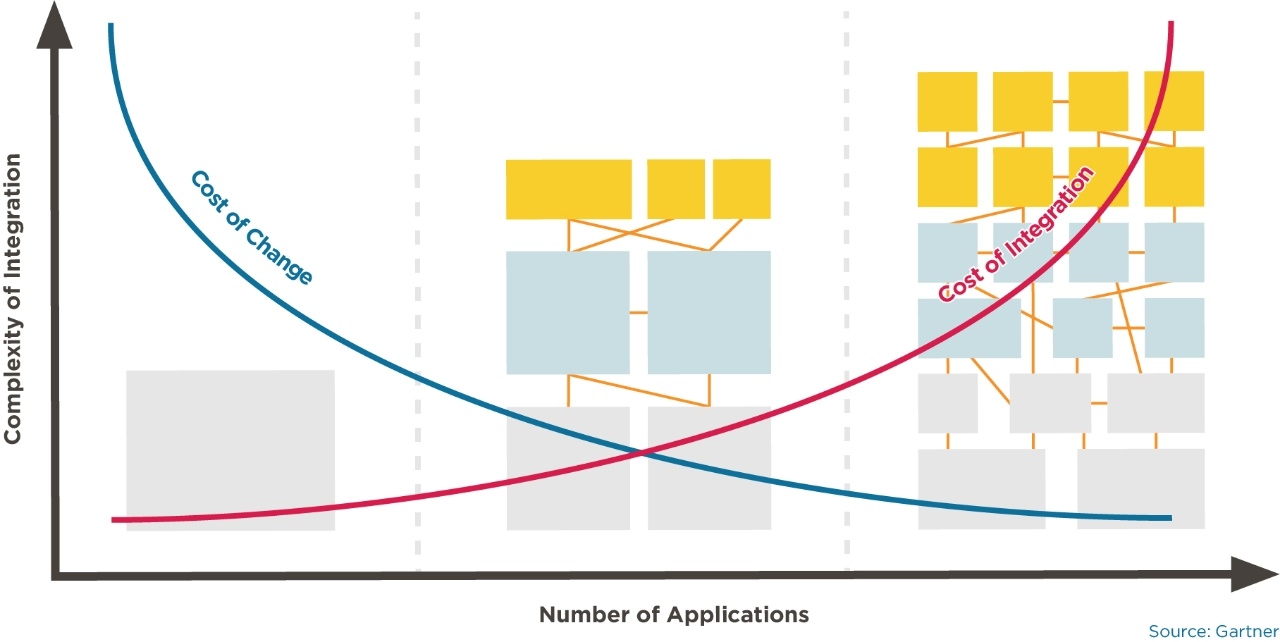Configuring your online/IT landscape
Digital tools and platforms often play an important role in change processes within organizations. Gartner's Pace-Layered model provides these insights!

Gartner's Pace-Layered model
Gartner's Pace-Layered model provides insight and ensures that a shared vision can be developed between, for example, the IT, (digital) marketing and sales departments for the online / IT landscape. The model contributes to gaining insight into the current landscape and to determining what the landscape should look like in order to be ready for the future as an organization.

3 layers of the system
The Pace-Layered model is very useful to clarify where the interests and working methods differ. The model identifies 3 types of system layers where the systems differ in terms of change process, architecture, financing, development approach, involvement of business owners and the planning horizon.
- Systems of record require a tightly organized process of change. An example of a system in this layer is the Enterprise Resource Planning (ERP). If changes are made in this system, the consequences are often enormous. The IT department usually has an essential role in all matters related to the ERP system. Lifespans of these kinds of systems easily stretch 5 to 10 years and over.
- Systems of differentiation are unique for a company or industry and have an average lifespan of 1 to 3 years. This system offers specific competitive advantages for a company or organization. Examples include a product configurator or specific R&D software.
- Systems of innovation can be a short-term investment, for example a campaign website that runs for a short period of time and has no directly affect the underlying systems. A campaign website can be set up through an agile process in which marketing/sales take the lead. It is important that the business value is quickly visible to the market.
Applying the system
For a project that we carried out some time ago, TRIMM developed a new online e-commerce platform, which replaced an existing platform. During the inventory of the existing web application, it proved to contain much more functionality than just e-commerce. It was a combination of ERP functionality, a loyalty program and e-commerce functionality. The Pace-Layered model is a very good tool for inventorying and visualizing the online / IT landscape.
Steps you can take:
- Visualizing the current landscape: The Pace-Layered model can help you map out what the landscape looks like, where systems are linked and where data exchange takes place. In many cases this has not been mapped out or only partially. Visualizing and discussing this provides a lot of clarity.
- Clarifying responsibilities: By mapping the landscape, it can be made clear which department is responsible for what. Our experience is that IT is often accredited a lot of responsibilities because they are often responsible for application maintenance. It is not always logical that IT is in the lead for every application, for example when it comes to the further development of a platform such as a website. Our experience shows that by using the Pace-Layered model, it becomes clear that marketing and sales often (should) play a much larger role than is assumed. More and more of our customers see that the web platform plays a decisive role in sales and therefore the involvement of sales is key to the success of a platform. Too often the site is seen as "plaything" of (online) marketing or IT, while in practice the online platform is often one of the most important account managers / sales managers that generates business. Through discussion between the different departments on the Pace-Layered model, bottlenecks emerge, and it can be determined where IT should be in the lead and where, for example, sales and marketing. Wishes can be brought to the table, there is more mutual understanding and processes often become (clearer) in this way.
- Visualizing the Future Landscape: If you know what the current landscape looks like, you can use the strategic course to determine what the future landscape might look like. Flexibility, innovation, e-commerce and speed are some of the main topics that affect many of our customers. To make this possible, the IT and online landscape must be suitable for this. Aspects such as an e-commerce platform, PIM, DAM, CRM, ERP, API layers, cloud and CDN often have to be included. We map out these landscapes with and for our customers. We also consult on the corresponding strategy.

Costs of change versus costs of integration
By understanding what your landscape looks like, you will also gain more insight into the costs of the necessary changes and integrations. Many organizations know that implementing and adapting a new ERP or CRM system can be a costly affair. Implementing a new app in the system of innovation is generally a less drastic project. Integrating small applications in the systems of differentiation and innovation, on the other hand, is much more challenging than the 'large' systems in the system of record.
We can help
The Pace-Layered model is the common thread and the flywheel for thinking about people, processes and technology. The correct and effective deployment of people, processes and technology are fed by the strategic direction.
TRIMM can advise you on this subject by means of an analysis of the current situation. We do this by conducting interviews with those involved. No clear strategic course? Then we will get started with this. Not yet clear how processes run and whether the right people / competencies are in house? Then we act as a process supervisor in this process. TRIMM has various consultants and architects who can support you during this process.
Get into contact with Michiel Verheij or call 053-4800 480.
Published on: March 23, 2021
Author: Michiel Verheij